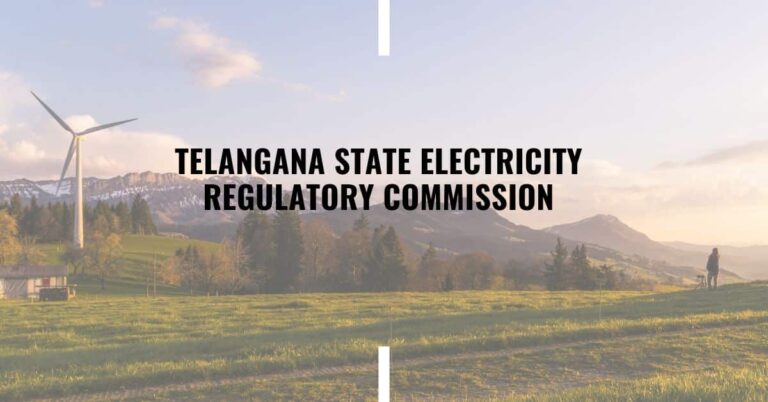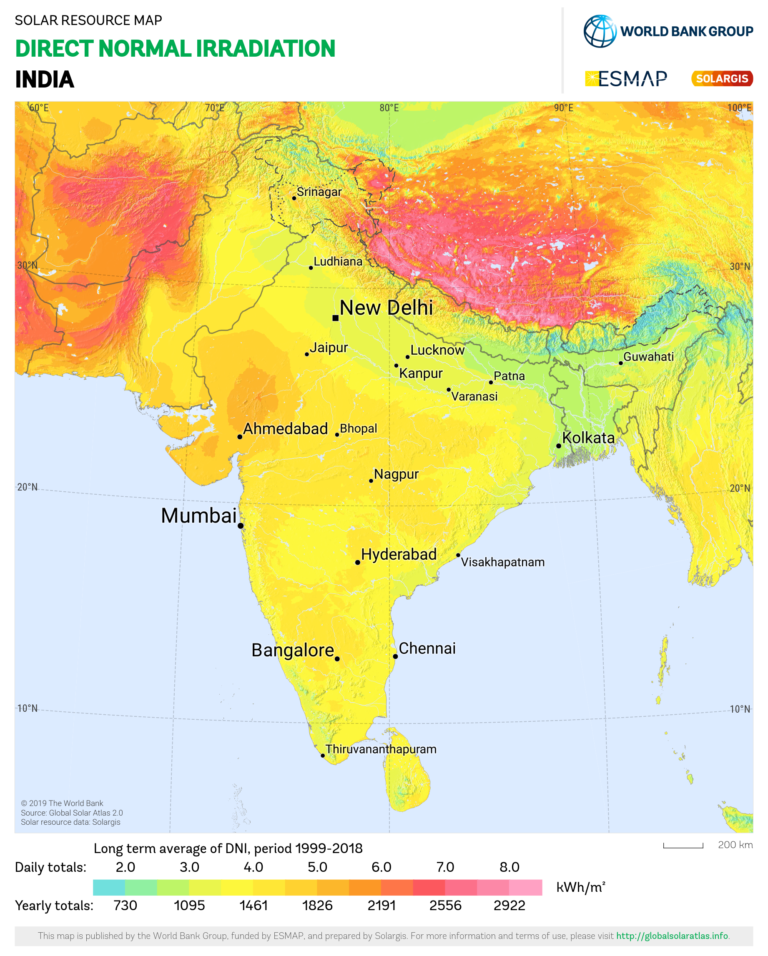
The Solar Energy Corporation of India Limited (SECI), a government enterprise, functions as an executing arm for the National Solar Mission, promoting solar energy in India. With the government\’s focus on renewable energy (RE), risks related to solar and wind energy have been reduced. This, along with technological advancements and economies of scale, has made RE tariffs competitive compared to non-RE power plants. The rapid RE growth has spurred innovations in energy storage. The Ministry of Power introduced guidelines for competitive tariff-based bidding for firm and dispatchable RE with energy storage. SECI is inviting proposals for setting up of ISTS-connected RE projects to supply 500 MW power and will sign a 25-year Power Purchase Agreement with selected bidders. The power will be sold to Punjab State Power Corporation Limited. Bidders can avail of fiscal incentives. SECI uses an online portal for its bidding processes, and bidders are responsible for ensuring they\’re registered and compliant with all requirements. The document outlines bidding procedures and conditions. Any amendments to this will be uploaded online. The text\’s interpretations section clarifies terms and contractual elements.
Under the outlined contract conditions, the RE Power Developer (RPD) is responsible for establishing ISTS-connected Renewable Energy (RE) Power Projects, including creating a dedicated transmission network up to the Interconnection/Delivery Point, primarily to supply RE power to SECI at their own cost. The RPD handles land identification, project setup, securing necessary approvals, and ensuring connectivity with the ISTS network. Projects are technology-neutral. E-bidding and e-Reverse Auction processes will select projects for a total capacity of 500 MW. Energy Storage Systems (ESS) are mandatory components. Bidders can offer a maximum of 250 MW and a minimum of 50 MW capacity. The projects can be anywhere in India, with various configurations allowed. Interconnection with the ISTS follows specific regulations, and the RPD shoulders associated costs. Bidders can choose from specific ISTS substations, with any deviations leading to bid rejection. RPDs must ensure accurate scheduling, bear certain power charges, and adhere to set timelines for project connectivity.
Power Supply by the RE Power Developer
The RPD should ensure firm and dispatchable RE power delivery, according to a demand profile. This profile has 96 time-blocks per day and is valid annually. Power should be scheduled daily, with intra-day variations allowed if they don\’t surpass the demand. A Demand Fulfillment Ratio (DFR) of 90% monthly is required. Excess generation can be sold to SECI/Buying Entity at half the PPA tariff. Power bought qualifies for RPO compliance. 100% of the offered energy should be RE, with up to 5% from green market sources. Shortfalls below 90% DFR lead to penalties, calculated based on the PSA. Shortfalls due to \”Force Majeure\” are exempt. RPD can supply excess power to third parties without SECI/Buying Entity\’s consent but must prioritize PPA demand. Selling to third parties without meeting PPA demand is penalized. RPD can upgrade the project and should respect contracted capacity limits. Power supply starts as per Central Electricity Regulatory Commission regulations. SECI verifies installed capacity, while RPD provides relevant documents. Part-commencement is allowed, following certain conditions. Delays in supply commencement have penalties, but some delays due to external issues can lead to schedule adjustments. Early power supply is permitted, subject to connectivity availability. Early supply is at the RPD\’s risk; Buying Entity gets the first refusal right, then SECI. Non-agreed early supply can be sold to third parties.
Under the Standard Conditions of Contract:
- Bidders must download the RfS documents from the ISN-ETS portal using their login details.
- Bidders should submit their project proposals with the necessary non-refundable fees mentioned in the Bid Information Sheet. Payment should be electronic and transaction receipts provided. MSMEs registered under specific bodies are exempt from certain fees.
- The RPD will establish the RE Power Project(s) and secure necessary approvals. The project\’s technology selection is neutral.
- The RE Power Developers must obtain all necessary clearances and permits for project setup. This includes environmental, forest, and other site-specific clearances. They should also adhere to specific state regulations.
- Bidders need to provide an Earnest Money Deposit (EMD) based on the project\’s capacity. This can be a bank guarantee, with specific conditions. EMD might be forfeited under conditions like bid withdrawal, non-compliance, or misleading documentation. Alternatively, an undertaking from recognized financial bodies can replace the EMD.
Performance Bank Guarantee (PBG)/ Payment on Order Instrument (POI)
- PBG Formula: It\’s calculated using the rated installed capacities of Solar, Wind, and ESS components.
- Example Provided: For capacities Solar: 400 MW, Wind: 1400 MW, BESS: 500 MWh, PBG = Rs. 6,61,80,00,000.
- Submission Timing: Before signing of PPA, following Format 7.3C, with validity 9 months post-SCSD.
- Return of BG/POI: After successful verification, BG/POI for EMD will be returned by SECI.
- Electronic BG: e-BG is acceptable, but if validity is short, it must be enhanced before PBG expires.
- Adjustment with Installed Capacity: If installed capacity is modified after LoA, PBG should be revised.
- PBG Name: It should be in the name of the entity signing the PPA.
- Separate PBG for Each Project: Only from Scheduled Commercial Banks. Foreign bank guarantees need endorsement from their Indian branch or SBI.
- Format Strictness: Any deviation in BG format may lead to bid rejection.
- Cash Deposit: SECI accepts BG in lieu of cash deposit.
- Signing PPA: If the selected bidder fails to adhere to stipulations, SECI can encash BG.
- Execution Requirements: BG must be on appropriate non-judicial stamp paper.
- Expenditure on BG: All costs, including stamp duty, are on Bidders/RPDs.
- Release of BG/POI: For unsuccessful bidders, it’s within 15 days post e-Reverse Auction. PBG is returned after successful power supply commencement.
- Alternative to PBG – POI: RPD can submit an undertaking from specific organizations as an alternative to PBG.
- Success & PSM Charges: Describes the payment to be made by selected bidders.
- Integrity Pact (IP): IEM will monitor contract execution. Details of IEMs provided.
- Power Purchase Agreement (PPA): SECI enters into PPAs with selected bidders. PPA is valid for 25 years from SCSD.
Bidders are required to provide comprehensive information about their promoters and shareholding when submitting bids in response to the Request for Selection (RfS). After the Letter of Acceptance (LoA) is issued, details regarding the promoters and shareholding need to be disclosed before the Power Purchase Agreement (PPA) is finalized with SECI. Shareholding changes are not allowed from the RfS submission date to the PPA execution, with some exceptions. Any changes post 1 year after the Scheduled Commissioning Date (SCSD) need SECI notification. For bid submissions, specific formats and requirements are laid out, including documents like Board Resolutions and Consortium Agreements. Responses to the RfS are subject to stringent criteria, with non-compliance leading to disqualification. Non-compliance includes not adhering to submission deadlines or not following the required formats. Transactions with SECI will attract an 18% GST. Only compliant bids will be considered, and non-responsive bids, based on various parameters like non-submission of required documents or not following prescribed formats, will be rejected.
Bidders responding to the RfS must follow specific submission protocols. Offline submissions require the original Bank Guarantee/POI related to EMD, as detailed in the Bid Information Sheet, and pass-phrases for techno-commercial and financial bids submitted online. These documents must not be delivered in person but should reach SECI\’s office within 2 working days post bid submission deadline. Online submissions demand digitally signed documents uploaded on the specified website. These include technical and financial bids, each with several documents and formats mentioned. Any deviation from instructions, missing online or offline documents, or incorrect submission processes can lead to bid cancellation, with potential financial penalties or refunds depending on the situation. Bidders must submit responses to RfS, valid for 12 months from the submission date. SECI can reject responses not meeting this validity. Bidders cover all costs linked to bid preparation and participation; SECI doesn\’t shoulder these. For clarifications on RfS, queries can be emailed or submitted through the ISN-ETS portal. SECI will address these in a Pre-Bid Meeting, details on SECI\’s website. Amendments to RfS will be notified online, giving bidders at least 7 days to submit revised bids. SECI can reject bids without reasons. Post-award, RPD must ensure timely completion of milestones without SECI\’s reminders. Qualification requirements detail general eligibility criteria, which includes company definitions, consortium conditions, foreign company participation rules, border sharing stipulations, and blacklisting criteria. Non-compliance leads to disqualification.
The RfS aims to promote commercially established technologies to ensure timely power commencement from projects. Only wind turbine models from the MNRE\’s RLMM are allowed. Solar modules must adhere to the MNRE\’s 2019 order and be listed under List-I. Wind projects will follow the Indian government\’s guidelines, as will solar modules. Bidders must provide evidence of meeting these criteria. The projects should align with the power supply criteria in Clause 8.
Financially, a bidder\’s net worth must match a formula based on installed capacity. The net worth is based on the last FY or 7 days before the bid deadline. Financial capability can be backed by the bidder\’s affiliates. Financial documents must be from the last FY or 7 days prior to bidding. For foreign bidders, exchange rates from the RBI will be used for conversion. If bidding as a consortium, financial requirements are divided based on equity commitments. If FY 2022-23\’s audited accounts aren\’t available, 2021-22\’s can be used.
BID EVALUATION AND PROJECT SELECTION
Bid Evaluation:
- Bids are evaluated based on the information provided by bidders according to the RfS.
Techno-Commercial Evaluation (Step 1):
- Technical Bids are opened online by SECI, only if required documents are submitted before the deadline.
- Late submissions are rejected.
- SECI evaluates the eligibility of bidders, seeking clarifications if necessary. Bidders must respond within 7 days through email/ISN-ETS portal.
Financial Bid Evaluation (Step 2):
- Bids are evaluated based on the \”First Round Tariff\” quoted.
- Financial bids of technically qualified bidders are opened.
- Tariffs are quoted in INR per kWh to two decimal places.
- Evaluation considers tariff quoted and contracted capacities.
Reverse Auction (Step 3):
- Shortlisted bidders participate in a reverse auction on a specified portal.
- The total number of eligible bidders for the auction is determined by set criteria.
- Bidders are informed of the auction date at least a week in advance.
- In the auction, tariffs can be decreased but not increased. The initial auction lasts 60 minutes, with possible extensions.
- Bidders fall into Green, Yellow, or Red zones, determining their potential project allocation.
Post e-RA, bidders in the “Green” and “Yellow” zones are ranked by their tariffs. Bidders within the L1 tariff + 5% range are deemed successful, but awards are limited to the SE capacity. In tie situations, time stamps determine the order, and if those are identical, rankings are based on the financial bid, then a lot is drawn. An example illustrates tariff rankings and cumulative capacities. Project capacity allocations end at SE. If the last successful bidder\’s partial capacity is less than 50% of their total, they can refuse. Otherwise, refusal leads to SECI encashing their Bank Guarantee. After selection, Letters of Award (LoAs) are given. If SECI doesn\’t find tariff buyers, it can annul bids. Power Purchase Agreements (PPAs) follow Power Sale Agreements (PSAs). If PPA offered capacity is lower than LoA capacity, bidders can reject it. If the refused PPA capacity is less than 50 MW, no PPA is executed.
After the e-RA, bidders from “Green” and “Yellow” zones are ranked by tariffs. Those within the L1 tariff + 5% are successful up to the SE capacity limit. Ties are resolved via timestamps, then financial bids, and finally a lot of draws. If a bidder\’s awarded capacity is under 50% of their total, they can decline; refusal otherwise results in SECI claiming their Bank Guarantee. Successful bidders receive Letters of Award (LoAs). SECI can annul bids if no tariff buyers are found. Bidders can reject PPAs if offered capacity is below their LoA, and no PPA is formed below 50 MW.



